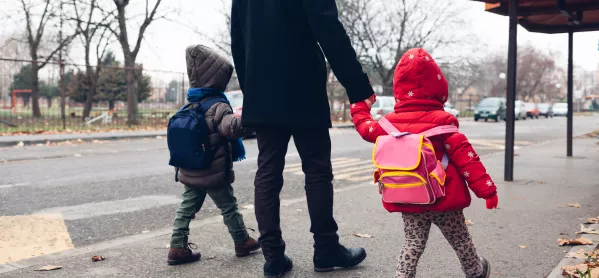- Home
- 5 ways to help pupils readjust to school
5 ways to help pupils readjust to school

While some children may be looking forward to the return to school, for many there will be a level of anxiety associated with going back to more traditional learning.
For weeks, young people have heard from parents and the government that the outside world is a dangerous place, where they shouldn’t touch anything or go near other people.
Students are now being asked to return to the classroom and leave the home that many of them will have considered to be their safe space. This will naturally place them on high alert: poised for an invisible danger. This is not a mental state conducive to learning.
Nurture-based approaches
If schools are to get the best out of their students, planning around the return to school should be trauma-informed and nurture-based, rather than concerned with catching up on missed academic learning.
When students are emotionally ready to learn, they will catch up quickly. But if academic learning is forced onto them too soon, it is likely to be a slow and painful process.
So how can teachers make sure that they prioritise connection over content?
1. Allow students a chance to catch up and rebuild attachments
While some students will appear to transition seamlessly from home learning back to school, many will feel insecure. They may show signs of separation anxiety, feel worried about fitting back in with friends that they haven’t seen in months or be concerned about both the changes to school and possibly becoming unwell.
All students will have stories to tell, worries to share and questions to ask - 20 minutes on the first day back will not be enough for them to get everything out. Students will need regular opportunities to be nurtured, to share their thoughts and to rebuild positive attachments. These times can also be used as opportunities to re-establish social skills, such as turn-taking, listening and asking questions.
Teachers will need to listen. Not just what their students say, but also how they communicate. This can give you some insight into how they are feeling and can help to identify who may need additional support.
2. Provide clear and consistent boundaries
Some students will have had strict rules and routines in place at home, others won’t have had any and will find responding to teachers and support staff difficult.
Being trauma-aware does not mean allowing behaviour to go unchecked. Children and young people find security in clear boundaries and this is never more important than when they are feeling anxious.
If students can also be involved in re-establishing the classroom rules, they may feel that they have a level of input, which can make the boundaries easier for them to manage.
3. Allow students some control
Children and young people have had to cope with having very little control over their own lives during the past few months and this may lead to frustration and anger in some students.
Where possible, in an environment which is going to have to be heavily controlled, allowing students to make choices where it’s appropriate can give them back a feeling of ownership and independence.
4. All behaviour is communication
This is a tough one to remember when a student is throwing something or swearing at you, but consider why they are behaving in this way, what triggered the behaviour and what the underlying cause may be. If you can see past the behaviour rather than reacting, you will often see a worried or frightened child who doesn’t know how to express themselves calmly.
5. Time in, not time out
Students who have experienced trauma during lockdown may feel rejected and as though they aren’t good enough. If a child who is operating in survival mode loses their temper and is excluded from the classroom as a result, this reinforces the message of rejection.
If students can be included, and humanistic methods such as talking about the reasons behind the behaviour are used, the child is more likely to feel accepted and respond positively.
If a student needs to be removed to calm down, they should be accompanied and helped to identify their feelings when they calm down, rather than sitting alone outside the classroom.
Vicki Williams is a specialist teacher of secondary students with social, emotional and mental health issues, teaching across key stages 3 and 4. Prior to that, she taught performing arts in mainstream schools for 15 years
Keep reading for just £1 per month
You've reached your limit of free articles this month. Subscribe for £1 per month for three months and get:
- Unlimited access to all Tes magazine content
- Exclusive subscriber-only stories
- Award-winning email newsletters



